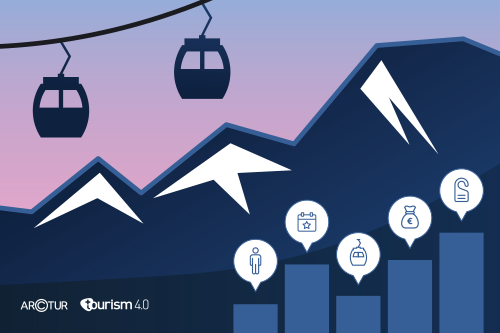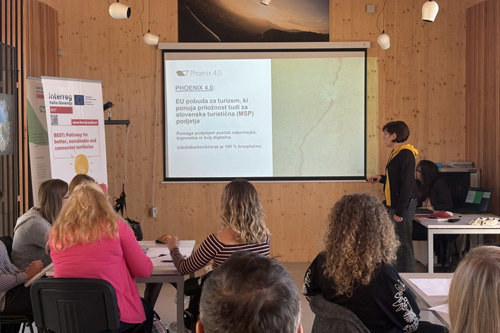
BeyondSnow is an innovative project focused on enhancing the resilience of snow tourism destinations (STD) in the Alpine region in the face of climate change. Funded by the Interreg Alpine Space program, the project involves multiple partners working together to develop tools and strategies to increase the resilience of alpine destinations.
The project aims to improve the understanding and management of climate change and its impacts on snow tourism destinations. The project focuses on data collection, vulnerability and resilience analysis, and the development of sustainable solutions for Alpine tourism destinations, which are increasingly affected by climate change. The goal is to assist local and regional authorities, destination management organizations (DMOs), and tourism businesses in adapting and enhancing their resilience.
One of the key outcomes of the project is the Resilience Adaptation Model (RAM). RAM is designed as a guide to assess and strengthen the resilience of Alpine snow tourism destinations, particularly in light of climate change. The model is based on the analysis of various indicators, including climatic and environmental factors, management capacities, and tourism metrics.
RAM's main objectives include vulnerability and resilience assessment, where it helps destinations assess their vulnerability and resilience to climate change so that they can better understand their strengths and weaknesses; adaptation strategy development, where the model provides guidance for the development of policies and measures to help destinations adapt to change and improve their resilience. The final objective of RAM is to support decision-making, using RAM as the basis for the development of a digital decision-making tool (RDMDT) that automates the process of data collection and analysis and helps destinations make informed decisions.
The Regional Alpine Management Assessment Model (RAM) comprises four main groups of indiscators. General destination indicators provide data on the type of destination, area, population and economic activities. Climate and environmental factors include the total seasonal snowfall, the altitude of the ski resorts and the possibilities of artificial snowmaking. Management capacities assess ecological change, stakeholder cooperation, tourism strategies and climate change adaptation. Tourism metrics measure tourism supply and demand, accommodation capacity and visitor numbers. Together, these indicators provide a comprehensive framework for assessing the region's performance and potential in various aspects of the RAM.
The model represents an important tool for Alpine snow tourism destinations, helping them assess and enhance their resilience to climate change. By including various indicators and developing a digital decision-making tool, BeyondSnow enables destinations to make informed decisions and develop sustainable strategies for the future.



